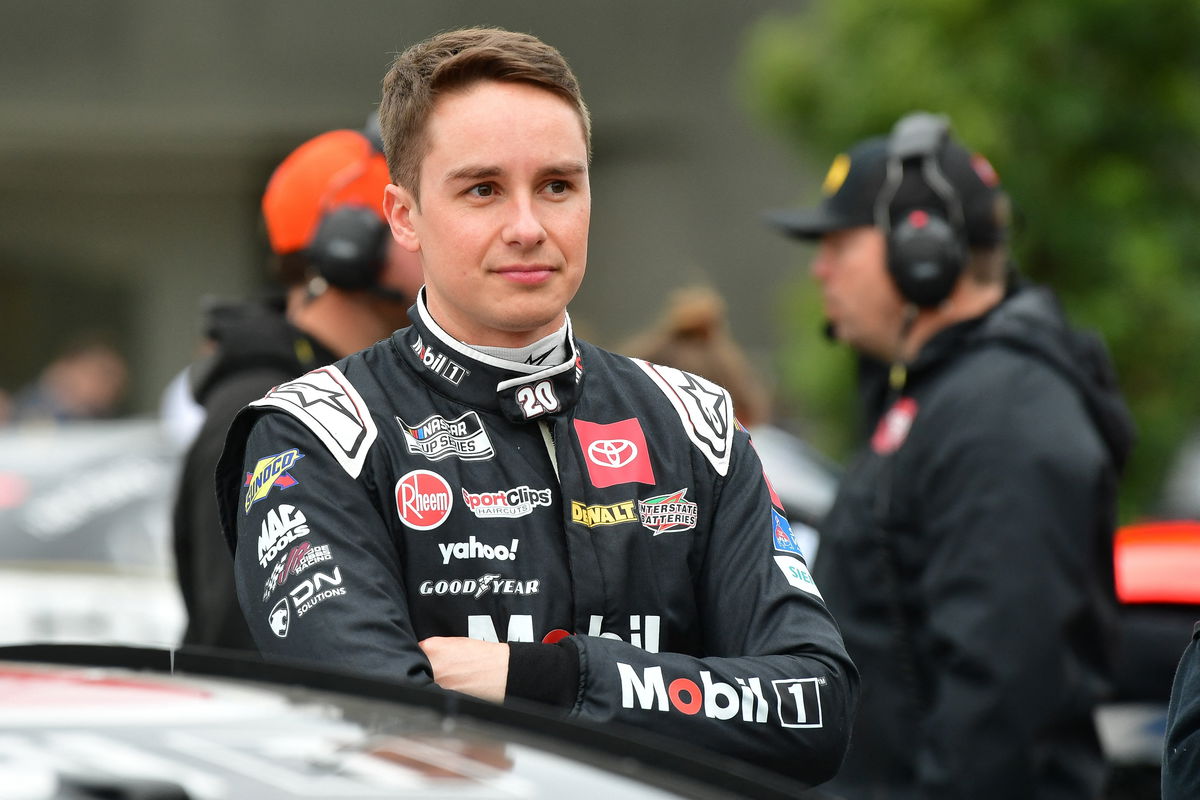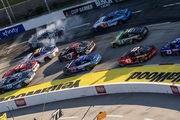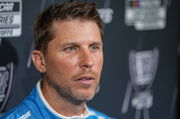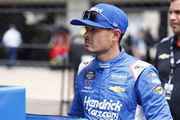
USA Today via Reuters
Feb 3, 2024; Los Angeles, California, USA; NASCAR Cup Series driver Christopher Bell (20) during practice at Los Angeles Memorial Coliseum. Mandatory Credit: Gary A. Vasquez-USA TODAY Sports

USA Today via Reuters
Feb 3, 2024; Los Angeles, California, USA; NASCAR Cup Series driver Christopher Bell (20) during practice at Los Angeles Memorial Coliseum. Mandatory Credit: Gary A. Vasquez-USA TODAY Sports
The 2025 All-Star Race at North Wilkesboro was a rare win for just about everyone involved. The throwback short track delivered a gritty, elbows-out kind of night that fans have been begging for. One could hear the crowd roaring, action was tight, and even the so-called “gimmicks” like the promoter’s caution somehow added to the drama instead of derailing it. Case in point – drivers like Joey Logano losing out on a potential win, whereas Alex Bowman is climbing the ranks for a fourth-place finish. All thanks to a well-timed tire change!
Watch What’s Trending Now!
However, Christopher Bell, fresh off a strong showing, had a unique perspective on what really made the racing tick this year. He pointed his praise in an unexpected direction. Bell showed support for a NASCAR partner that’s been in the crosshairs of fans more than once. So, what’s behind Bell’s surprising stance?
ADVERTISEMENT
Christopher Bell backs Goodyear’s softer tire at North Wilkesboro
Christopher Bell delivered a thrilling performance to win the 2025 NASCAR All-Star Race at North Wilkesboro Speedway, securing his first All-Star victory in dramatic style. Bell surged past Joey Logano with just nine laps to go, ultimately sealing the win by 0.829 seconds. This was after an intense, side-by-side battle that kept the packed grandstands on their feet. The race featured a record 17 lead changes and was shaped by a critical pit stop under the “Promoter’s Caution” at Lap 216. Bell’s decision to pit for two fresh right-side tires allowed him to chase down Logano. The Team Penske driver stayed out on older rubber, and Bell made the decisive pass on Lap 241 of 250.
Speaking about the tire strategy in his post-race press conference, Christopher Bell credited Goodyear’s softer compound for allowing tighter racing and more passing. This is something fans have been asking for in recent years. “I do think that tire they brought, it definitely helps us run closer together,” he said. The softer “Martinsville tire” was a major factor in the late-race action, as Bell’s fresh rubber gave him the grip needed to move up from sixth on the restart and ultimately take the lead from Logano. However, Bell wasn’t alone in his praises. A Hendrik Motorsports driver had praises, too.
Asked Christopher Bell about the impact the soft Martinsville tire had on the racing at North Wilkesboro. He said it was a big help in letting the field run closer together and race better.
Bell then advocated for bringing softer tires to intermediates given the success Goodyear… pic.twitter.com/twzXOap6RQ
— Steven Taranto (@STaranto92) May 19, 2025
ADVERTISEMENT
Alex Bowman, who finished fourth, echoed these sentiments: “I think tires mattered a lot more than last year. A lot more than we probably expected them to.” The new tire brought by Goodyear created more tire falloff and forced teams to make tough strategy calls, keeping the racing unpredictable and exciting. C. Bell has even hoped for the soft tires to be used more often. And not just be limited to short tracks.
“Goodyear’s been doing a really good job of getting softer tires for the short tracks. I think the intermediates need to start going in that same direction as well,” he explained. With intermediates making up over a third of the calendar, a move toward softer compounds could radically alter how those races play out. And now, the chaotic 2022 Texas race makes a lot of sense.
ADVERTISEMENT
NASCAR’s playoff race at Texas Motor Speedway in 2022 drew comparisons to the infamous 2008 “tire debacle” race at Indianapolis Motor Speedway. Three different drivers blew tires while leading, and a variety of other contenders had tire problems. In that race, Bell indicated that he had about five seconds of vibration before his tire would fail. Chase Elliott was in a tighter fit. “I can say, without a doubt, air pressure is playing into it,” said Greg Stucker, Goodyear’s Director of Racing. But one person looked very convinced about this learning process, and maybe that made a difference today.
NASCAR official Scott Miller said, “It’s an unfortunate part of the learning process.” And it is evident now. Whenever there is a track where tire strategies dominate, some drivers perform extremely well, while others lag. With drivers like Christopher Bell pushing for more tire falloff and fans responding positively to the action, Goodyear’s approach to North Wilkesboro could be a blueprint for future NASCAR races across different track types. And this shift was predicted earlier this year at Martinsville.
Top Stories
Controversial Crew Chief Finds Fresh Start With 17-Yo NASCAR Team

Footage Surfaces of Florida Police Arresting NASCAR Veteran Over Disturbing Public Misbehavior

NASCAR Team Owner Demands Charter-Like Deal for Financially Struggling O’Reilly Series

Ex-Fox Broadcaster Publicly Exposes One of His Own Amidst Denny Hamlin’s Ugly Social Media Feud

Kyle Larson’s Sprint Car Rivals Threatens Criminal Action Against Track Owner Over $15,000 Winner’s Purse

ADVERTISEMENT
The 2025 Martinsville race: The one that started NASCAR’s tire revolution
The 2025 Cook Out 400 at Martinsville wasn’t just another short track slugfest. Rather, it was the launchpad for NASCAR’s new era of tire strategy and race excitement. Denny Hamlin dominated the day, snapping a 19-race winless streak and notching his first Martinsville victory since 2015. Hamlin led 274 of the 400 laps. But the real story was how tire wear and pit strategy shaped the race’s drama.
Goodyear’s decision to bring a softer tire compound to Martinsville paid off. Drivers and fans noticed more tire falloff. This forced teams to make tough calls on when to pit and how to manage their rubber over long green-flag runs. This led to nine lead changes among six drivers, and 10 cautions kept the field bunched and strategies flexible. The final 75-lap green-flag run saw Hamlin pull away. But the battle for second between Christopher Bell, Bubba Wallace, and Chase Elliott was fierce. At one point, less than 0.6 seconds separated them as they fought for position in the closing laps.
Christopher Bell finished second, praising the tire’s impact on the racing. He and others noted how the softer compound allowed cars to run closer together and created more passing opportunities. The race’s unpredictable strategy, tire management, and late-race intensity set the tone for what fans would see at North Wilkesboro (and hopefully beyond). The Martinsville race proved that a simple change in tire philosophy could transform the racing product.
ADVERTISEMENT
Will NASCAR continue to push for softer compounds after North Wilkesboro and Martinsville’s success? The answer from drivers and fans seems to be a resounding yes! What do you think? Should NASCAR lean further into this direction?
ADVERTISEMENT
ADVERTISEMENT
ADVERTISEMENT

